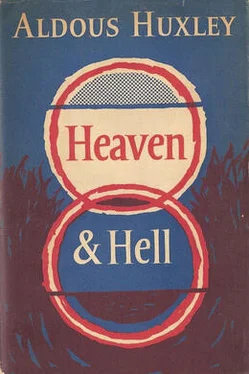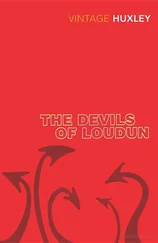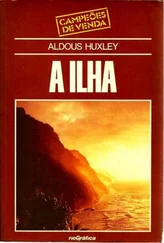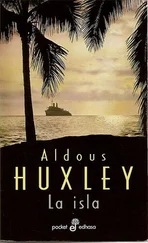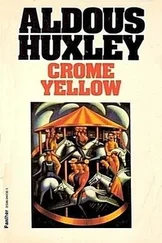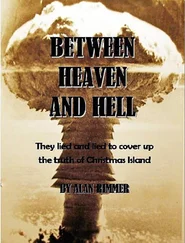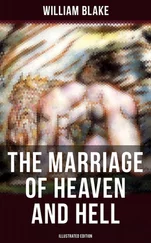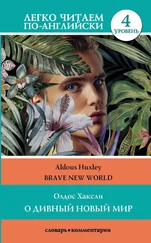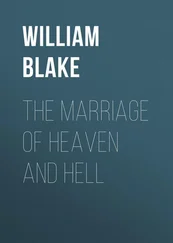'Carpentry,' said Ben Jonson sarcastically, 'is the soul of masque.' His contempt was motivated by resentment. Inigo Jones was paid as much for designing the scenery as was Ben for writing the libretto. The outraged laureate had evidently failed to grasp the fact that masque is a visionary art, and that visionary experience is beyond words (at any rate beyond all but the most Shakespearean words) and is to be evoked by direct, unmediated perceptions of things that remind the beholder of what is going on at the unexplored antipodes of his own personal consciousness. The soul of masque could never, in the very nature of things, be a Jonsonian libretto; it had to be carpentry. But even carpentry could not be the masque's whole soul. When it comes to us from within, visionary experience is always praeternaturally brilliant. But the early set designers possessed no manageable illuminant brighter than a candle. At close range a candle can create the most magical lights and contrasting shadows. The visionary paintings of Rembrandt and Georges de Latour are of things and persons seen by candlelight. Unfortunately light obeys the law of the inverse squares. At a safe distance from an actor in inflammable fancy dress, candles are hopelessly inadequate. At ten feet, for example, it would take one hundred of the best wax tapers to produce an effective illumination of one foot–candle. With such miserable lighting only a fraction of the masque's visionary potentialities could be made actual. Indeed, its visionary potentialities were not fully realized until long after it had ceased, in its original form, to exist. It was only in the nineteenth century, when advancing technology had equipped the theatre with limelight and parabolic reflectors, that the masque came fully into its own. Victoria's reign was the heroic age of the so–called Christmas pantomime and the fantastic spectacle. 'Ali Baba,' 'The King of the Peacocks,' 'The Golden Branch,' 'The Island of Jewels'—their very names are magical. The soul of that theatrical magic was carpentry and dressmaking; its indwelling spirit, its scintilla animae , was gas and limelight and, after the 'eighties, electricity. For the first time in the history of the stage, beams of brightest incandescence transfigured the painted backdrops, the costumes, the glass and pinchbeck of jewellery, so that they became capable of transporting the spectators towards that Other World which lies at the back of every mind, however perfect its adaptation to the exigencies of social life—even the social life of Mid–Victorian England. Today we are in the fortunate position of being able to squander half a million horsepower on the nightly illumination of a metropolis. And yet, in spite of this devaluation of artificial light, theatrical spectacle still retains its old compelling magic. Embodied in ballets, revues and musical comedies, the soul of masque goes marching along. Thousand–watt lamps and parabolic reflectors project beams of praeternatural light, and praeternatural light evokes, in everything it touches, praeternatural colour and praeternatural significance. Even the silliest spectacle can be rather wonderful. It is a case of a New World having been called in to redress the balance of the Old—of visionary art making up for the deficiencies of all too human drama.
Athanasius Kircher's invention—if his, indeed, it was—was christened from the first Lanterna Magica . The name was everywhere adopted as perfectly appropriate to a machine, whose raw material was light, and whose finished product was a coloured image emerging from the darkness. To make the original magic lantern show yet more magical, Kircher's successors devised a number of methods for imparting life and movement to the projected image. There were 'chromatropic' slides, in which two painted glass discs could be made to revolve in opposite directions, producing a crude but still effective imitation of those perpetually changing three–dimensional patterns, which have been seen by virtually everyone who has had a vision, whether spontaneous or induced by drugs, fasting or the stroboscopic lamp. Then there were those 'dissolving views,' which reminded the spectator of the metamorphoses going on incessantly at the antipodes of his everyday consciousness. To make one scene turn imperceptibly into another, two magic lanterns were used, projecting coincident images on the screen. Each lantern was fitted with a shutter, so arranged that the light of one could be progressively dimmed, while the light of the other (originally completely obscured) was progressively brightened. In this way the view projected by the first lantern was insensibly replaced by the view by the second—to the delight and astonishment of all beholders. Another device was the mobile magic lantern, projecting its image on a semi–transparent screen, on the further side of which sat the audience. When the lantern was wheeled close to the screen, the projected image was very small. As it was withdrawn, the image became progressively larger. An automatic focussing device kept the changing images sharp and unblurred at all distances. The word 'phantasmagoria' was coined in 1802 by the inventors of this new kind of peepshow.
All these improvements in the technology of magic lanterns were contemporary with the poets and painters of the Romantic Revival, and may perhaps have exercised a certain influence on their choice of subject–matter and their methods of treating it. Queen Mab and The Revolt of Islam , for example, are full of Dissolving Views and Phantasmagorias. Keats's descriptions of scenes and persons, of interiors and furniture and effects of light, have the intense beamy quality of coloured images on a white sheet in a darkened room. John Martin's representations of Satan and Belshazzar, of Hell and Babylon and the Deluge, are manifestly inspired by lantern slides and tableaux vivants dramatically illuminated by limelight.
The twentieth–century equivalent of the magic lantern show is the coloured movie. In the huge, expensive 'spectaculars,' the soul of masque goes marching along—with a vengeance sometimes, but sometimes also with taste and a real feeling for vision–inducing phantasy. Moreover, thanks to advancing technology, the coloured documentary has proved itself, in skilful hands, a notable new form of popular visionary art. The immensely magnified cactus blossoms, into which, at the end of Disney's The Living Desert , the spectator finds himself sinking, come straight from the Other World. And then what transporting visions, in the best of the nature films, of foliage in the wind, of the textures of rock and sand, of the shadows and emerald lights in grass or among the reeds, of birds and insects and four–footed creatures going about their business in the underbrush or among the branches of forest trees! Here are the magical close–up landscapes which fascinated the makers of mille–feuille tapestries, the mediaeval painters of gardens and hunting scenes. Here are the enlarged and isolated details of living nature out of which the artists of the Far East made some of the most beautiful of their paintings.
And then there is what may be called the Distorted Documentary—a strange new form of visionary art, admirably exemplified by Mr Francis Thompson's film, 'NY, NY.' In this very strange and beautiful picture we see the city of New York as it appears when photographed through multiplying prisms, or reflected in the backs of spoons, polished hub caps, spherical and parabolic mirrors. We still recognize houses, people, shop fronts, taxi cabs, but recognize them as elements in one of those living geometries which are so characteristic of the visionary experience. The invention of this new cinematographic art seems to presage (thank heaven!) the supersession and early demise of non–representational painting. It used to be said by the non–representationalists that coloured photography had reduced the old–fashioned portrait and the old–fashioned landscape to the rank of otiose absurdities. This, of course, is completely untrue. Coloured photography merely records and preserves, in an easily reproducible form, the raw materials with which portraitists and landscape painters work. Used as Mr Thompson has used it, coloured cinematography does much more than merely record and preserve the raw materials of non–representational art; it actually turns out the finished product. Looking at 'NY, NY,' I was amazed to see that virtually every pictorial device invented by the Old Masters of non–representational art and reproduced ad nauseam by the academicians and mannerists of the school, for the last forty years or more, makes its appearance, alive, glowing, intensely significant, in the sequences of Mr Thompson's film.
Читать дальше
